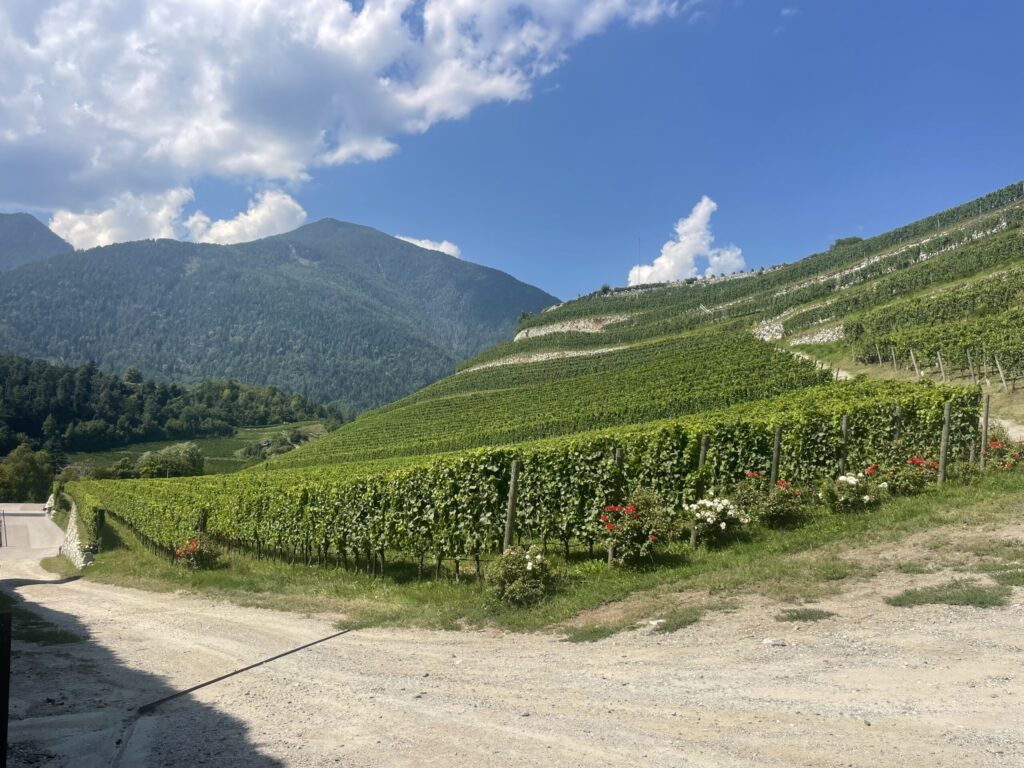
When you picture Italian wine country, you probably think of rolling Tuscan hills or vineyards in Piedmont. I thought the same until I made my way up to Trentino-Alto Adige, Italy’s northernmost wine region, tucked right under the Alps. It’s a place where Italian charm meets Austrian efficiency, and where the wines taste as crisp and fresh as the mountain air.
This region has been making wine for over 2,500 years, and you can feel that history everywhere: in the stone walls of cellars, in the mix of grape varieties, and in the way locals talk about wine as if it’s just part of daily life. What I loved most was how much variety and value you get here. You can step into a thousand years of history, sip world-class wines, and feel like you’ve discovered one of Italy’s best-kept secrets.
Grapes of the Alps
Before I dive into my winery visits, let me set the scene. About 70% of vineyards here are planted with white grapes. Chardonnay and Pinot Grigio are everywhere, but aromatic varieties like Gewürztraminer, Riesling, Sylvaner, and Müller-Thurgau thrive too. The reds are just as interesting:
- Lagrein, deep and velvety, is Alto Adige’s signature grape.
- Schiava (also called Vernatsch) is light and fruity, often blended with Lagrein to make a style called St. Magdalener.
- Teroldego, Trentino’s native grape, is dark, spicy, and full of personality.
Because of the Alpine climate, harvest usually kicks off in mid-September. Warm sunny days ripen the grapes, while cool nights lock in freshness. That’s why the wines here feel so pure and vibrant.
Stop One: Kuen Hof
Our first tasting was at Kuen Hof, a family-run winery perched above the Isarco Valley. The tasting and tour cost just €19.50 per person, which felt like an absolute bargain once we stepped inside.
This estate has a story that belongs in a history book. Kuenhof was first mentioned in the 12th century, and later came under the ownership of the Bishop of Bressanone (Brixen), so it’s definitely ancient. It’s been in the Pliger family’s hands for about 200 years. Today, the cellar still has walls (pictured below) that are part of the original building and are over 900 years old. Imagine sipping Riesling surrounded by stones that have outlived empires.
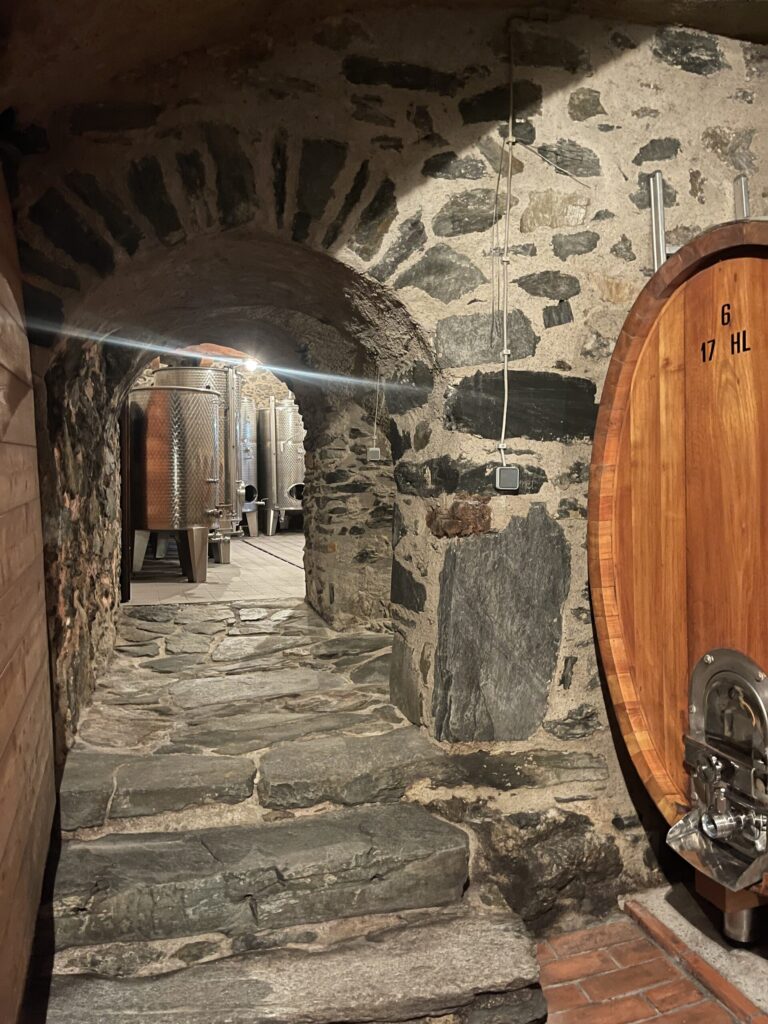
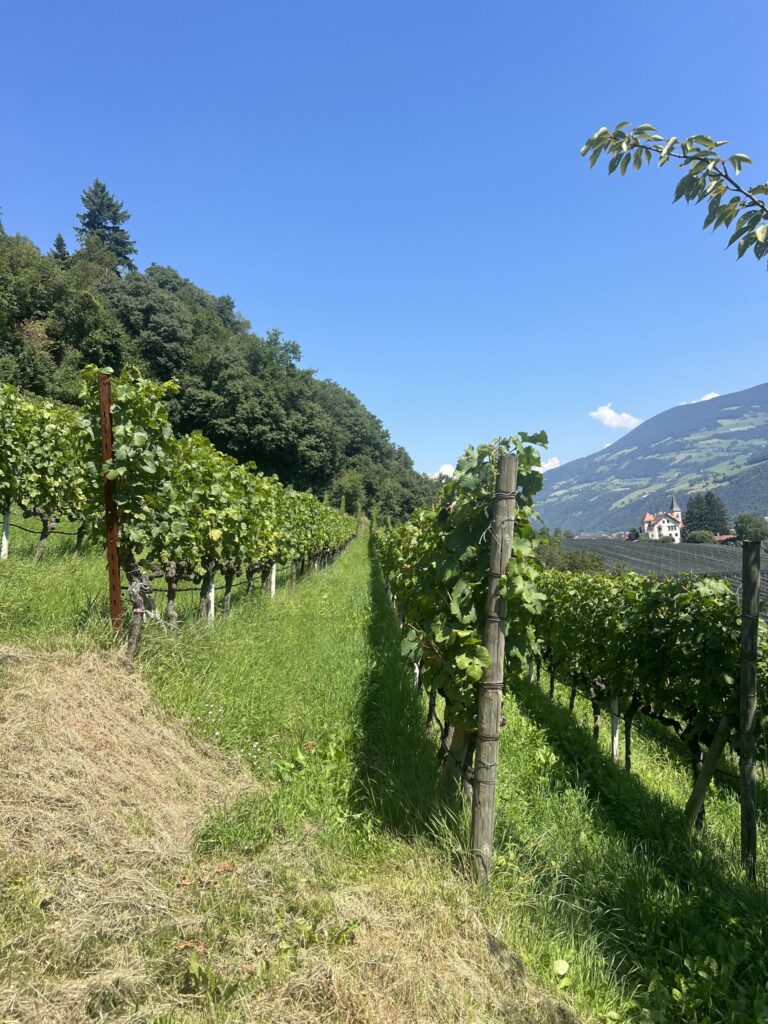
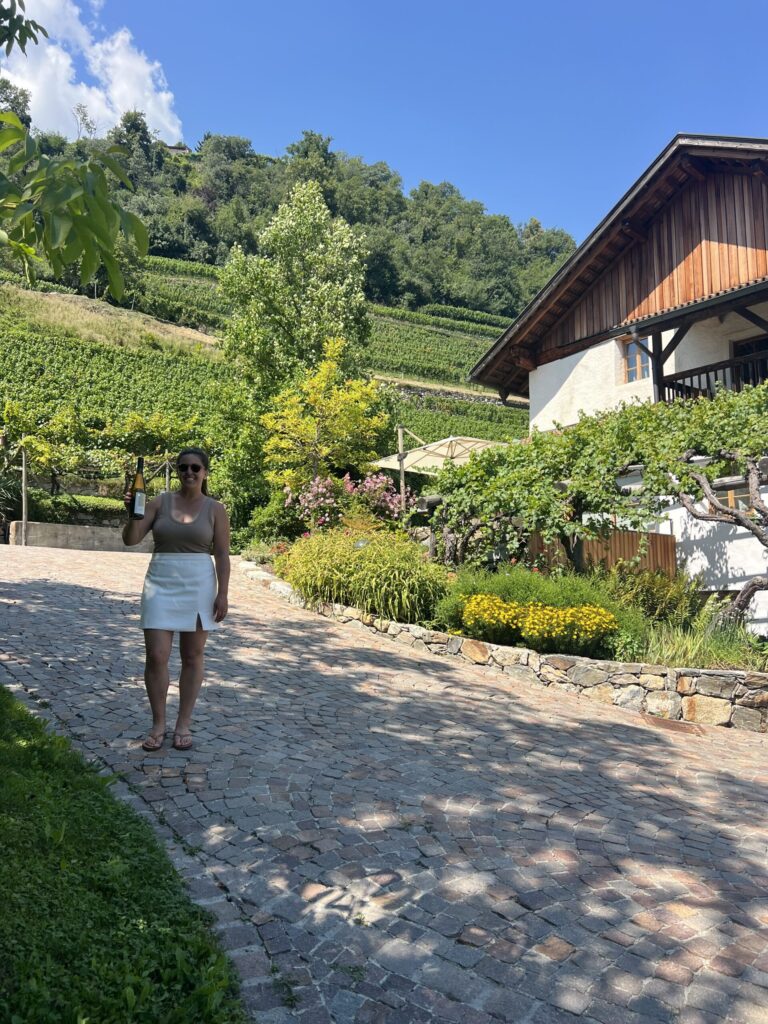
The wines were just as unforgettable. We tried Riesling, Sylvaner, and Grüner Veltliner & a dessert wine. The first three had this incredible alpine freshness, with minerality that made me feel like I was drinking straight from a mountain stream (in the best way possible). It was intimate, welcoming, and a reminder that great wine doesn’t need to come with a hefty price tag. A few of these wines are also available to purchase in Australia! Check out Vino Italiano for the Riesling or Sylvaner.
Stop Two: Abbazia di Novacella – Kloster Neustift
Next up was Abbazia di Novacella, a working monastery that has been making wine since 1142. Walking through the abbey, with its frescoes and quiet cloisters, I had to keep reminding myself this wasn’t just a museum. The monks still oversee the vineyards, and the wines feel just as alive as the history around them.



Because we didn’t book the private tasting, we stopped in at the tasting lineup at the wine bar on the property. The wine ranges available really showed off the region’s diversity. The Sylvaner was crisp, the Kerner floral and refreshing, and the Lagrein dark and powerful.
But the real surprise for me was my first ever St. Magdalener. It’s mostly Schiava, with a splash of Lagrein, and it was light yet expressive, full of red berries and gentle florals. Somewhere between a white and a red in spirit, it was a completely new discovery, and while it’s one of the cheaper wines in their portfolio, it’s the bottle we decided to bring back to Australia.
Winery Three: Muri-gries Winery
Finally, we tried a bottle from Muri-Gries Winery: the Lagrein Alto Adige DOC 2023. If Kuen Hof was all about freshness, this Lagrein was about richness. It poured a deep ruby color and smelled of blackberry, violet, and a hint of spice. On the palate, it was velvety and full-bodied, yet still lifted by that alpine freshness. It was the perfect example of how reds from this region can feel bold but never heavy.
I carried this wine in my backpack to the top of the mountain, and enjoyed it in the best location I could have ever dreamed up.

More Than Just Wine
Of course, wine isn’t the only thing Trentino-Alto Adige does well. The food here deserves its own spotlight. Speck, the local smoked ham, was everywhere, usually alongside mountain cheeses and hearty dumplings. And don’t even get me started on the apple strudel. Every meal felt rustic, comforting, and perfectly matched to the wines.
Between tastings, we wandered through alpine towns with pastel-painted houses and cobblestone streets. It felt like stepping into a storybook, with vineyards lining every road and steep hills.
Final Thoughts
What struck me most about Trentino-Alto Adige is its depth, with numerous layers. At Kuen Hof, we tasted wines in a cellar that has stood for over 900 years. At Abbazia di Novacella, I discovered a new wine style to me in a nearly nine-century-old monastery. Tasting Muri-gries, a Lagrein, showed me the depth and power this region can bring to its reds.
It might not be as famous as Tuscany or Piedmont, but that’s exactly why I loved it. It felt authentic, welcoming, and full of surprises. If you’re a wine lover who likes to stretch your budget while still sipping something unforgettable, Trentino-Alto Adige should be at the top of your list.

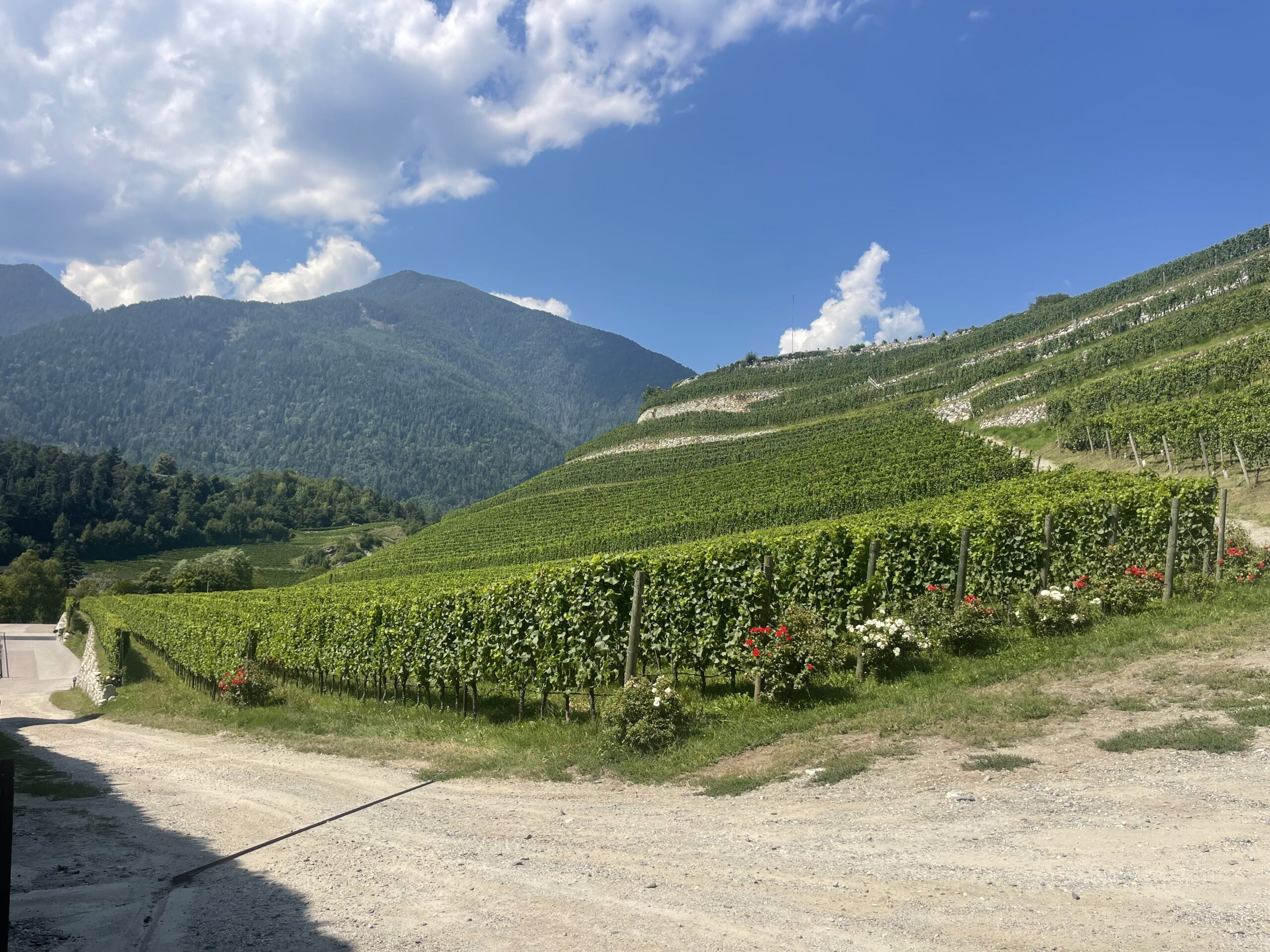
Leave a Reply